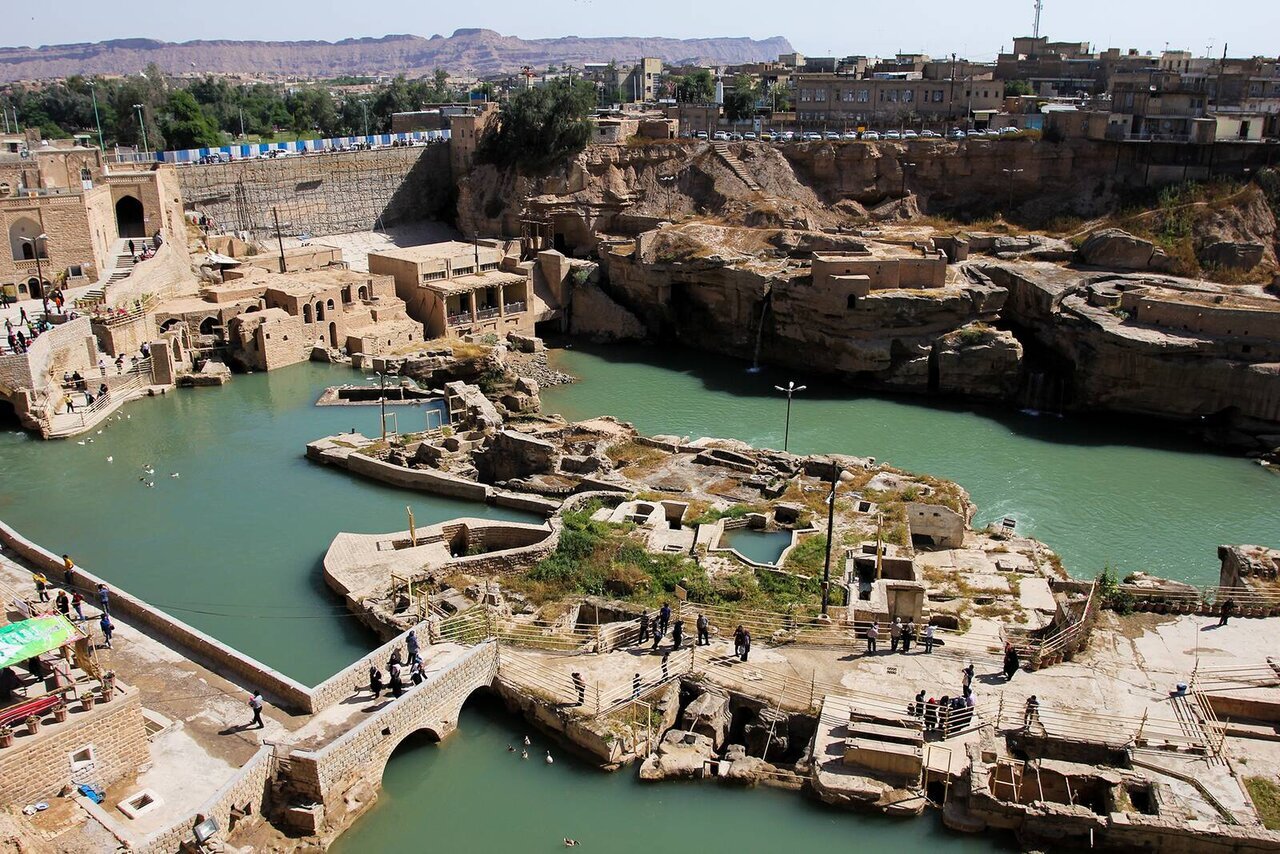Earthquake in Khuzestan: emergency inspection conducted at Shushtar World Heritage site

TEHRAN - Following a series of earthquakes including a 5.6-magnitude one that struck Khuzestan early Thursday morning, emergency inspections were carried out at Shushtar Historical Hydraulic System, a UNESCO World Heritage site.
According to the Ministry of Cultural Heritage’s public relations office, a series of earthquakes beginning on Thursday, necessitated immediate assessments to protect and evaluate potential damage to the region’s historical assets.
Amin Mahdavikia, director of the Shushtar World Heritage Base, led the inspection alongside heritage experts, ILNA reported.
“Following our on-site assessments, we are relieved to report that no damage has been observed to the World Heritage properties or surrounding areas,” Mahdavikia confirmed.
The earthquakes impacted several cities across Khuzestan province, with 14 tremors recorded as of Thursday. Cities such as Haftkel, Masjed Soleyman, Izeh, and Qaleh Tall experienced intense and moderate quakes, while the tremors were felt in Ahvaz, Bavi, Hamidiyeh, and Shushtar.
The initial and most severe quake, measuring 5.6 on the Richter scale, struck Haftkel at 7:32 a.m. local time. It was followed by aftershocks of 3.2 and 3.5 magnitudes, the report said.
A separate earthquake with a magnitude of 4.8 hit Masjed Soleyman at 7:53 a.m., followed by three subsequent quakes, including a significant 5.2-magnitude tremor at 9:08 a.m., originating at a depth of 9 kilometers.
Local authorities and emergency teams remain on alert as aftershocks continue. The Ministry of Cultural Heritage then emphasized the ongoing commitment to safeguarding Iran’s historical and cultural sites amid natural disasters.
A living testament to water engineering
The UNESCO-listed Shushtar Historical Hydraulic System is a testament to the ingenuity and creativity of ancient Iranian engineering. Called a “masterpiece of creative genius” by the UN cultural body, these water structures exemplify ancient Iranian engineers’ advanced knowledge and skill in water management and architecture.
The property can be considered a living museum of Iran’s water industry, providing tangible evidence of the advanced engineering knowledge possessed by the ancient Iranians. Although only parts of this intricate system remain today, the cascading waters, mills, beautiful artificial waterfalls, and pools still create a breathtaking scene in the heart of the city.
Interestingly, these historical water structures have been interconnected for centuries and still function as a cohesive water system.
The system, which dates back to the 5th century BC, involved the creation of two main diversion canals on the Karun River. One of these, the Gargar canal, remains in use today, supplying water to Shushtar through a series of tunnels that power mills. This system forms a spectacular cliff from which water cascades into a downstream basin before entering the plain south of the city, where it has enabled the cultivation of orchards and farmland over an area of 40,000 hectares.
The Shushtar Hydraulic System is not just an ancient marvel; it is a symbol of human ingenuity and the ability to harmonize with natural elements. The system includes a variety of interconnected elements, such as bridges, dams, tunnels, and mills, all working together to manage and utilize water efficiently. The design and construction of these structures demonstrate a profound understanding of hydraulic engineering and a deep respect for the environment.
The legacy of the Shushtar Hydraulic System continues to inspire modern engineers and architects. Its innovative design and functionality have been studied and admired by scholars worldwide. The system’s ability to sustain agricultural practices and support the local population for centuries stands as a remarkable achievement in sustainable engineering.
AM
Leave a Comment